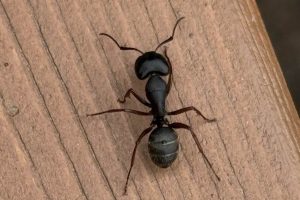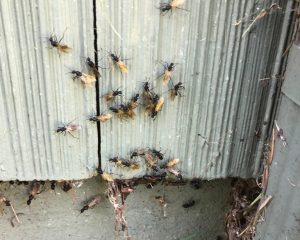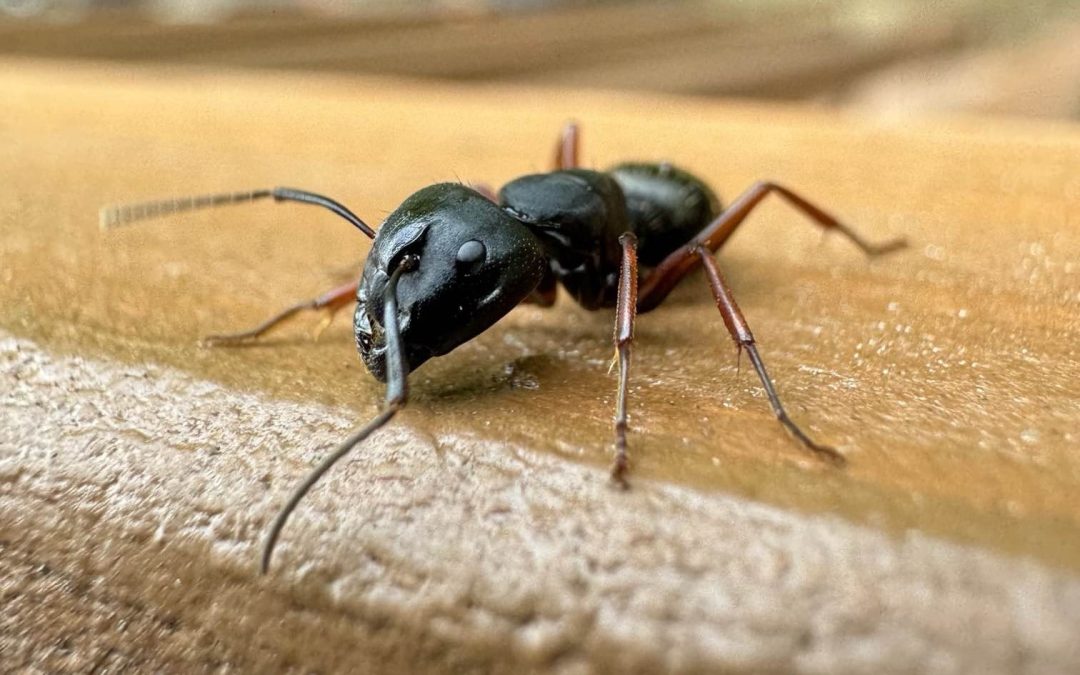As Pacific Northwesterners, we truly embrace the outdoors. Whether we’re in Eugene, Corvallis, or Salem, it often feels like everyone’s just a moment away from heading out on a hike. We love soaking up the sun, especially when the spring and summer months finally arrive!
But along with the sunshine comes the responsibility of tending to our yards, gardens, and homes. And as we dig into those seasonal projects, we often spot things we might have missed during the rainy months—including the occasional pest lurking around our property. One pest, in particular, that catches many homeowners’ eyes is the carpenter ant. So, when should you worry if you’re seeing these ants around your home? Let’s dive in and find out.
Key Takeaways:
- Learn to identify carpenter ants and distinguish them from other pests.
- Understand of potential for indoor infestations.
- Preventive maintenance is key in avoiding carpenter ant problems.
- Seeing an occasional Carpenter Ant outside is nothing to stress about.
- Know when it’s time to call a professional for help.
Identifying Carpenter Ants
Carpenter ants are larger than most other ant species, typically ranging from 1/4 to 1/2 inch in length. Their bodies are usually black, reddish-black, or a combination of both, with a distinct, smoothly rounded thorax. One way to tell them apart from termites is by their narrow, pinched waist and bent (elbowed) antennae. If you see winged ants, known as alates, it’s usually during the mating season, and while they resemble termites, you can distinguish them by their size and unequal wing lengths.

A top-down view of a carpenter ant, known for its segmented body and powerful mandibles, often found in wooden structures.
Outdoor Nesting Habits
Carpenter ants love damp or decaying wood, which makes old tree stumps, fallen logs, and even wooden structures like fences ideal nesting sites. Spotting a carpenter ant nest outdoors doesn’t necessarily mean immediate trouble for your home, but it’s important to keep an eye on it. The real risk comes when these ants expand their colony by creating satellite nests, which can form inside dry, sound wood—including the wooden structures of your home. Monitoring outdoor colonies is important to avoid letting them move in.
Preventive Maintenance
One of the best ways to avoid carpenter ants is to maintain your home and yard proactively. Indoors, fix any moisture issues such as leaky pipes or clogged gutters, and outside, ensure proper drainage to prevent water pooling around your foundation. Carpenter ants are drawn to moist environments, so reducing water exposure is critical. Keep firewood and mulch away from your house, trim trees and shrubs touching the home, and regularly inspect and repair any decaying wood on fences, decks, or sheds.
Sealing cracks and gaps in your home’s foundation, doors, and windows can prevent carpenter ants from wandering inside. Ensure your home’s crawl spaces and attics are well-ventilated to keep moisture under control.
Foraging Behavior
Carpenter ants are foragers, primarily seeking food outdoors. They don’t eat wood like termites do, but they’re attracted to sweet and protein-rich foods. If you see carpenter ants near doorways or windows, they may be foraging for food inside your home. Monitoring ant activity around these areas is crucial. If ants are trailing consistently, especially near small cracks or gaps, they might be finding their way into your home.
Potential for Indoor Infestation
This is the big take-away, so please pay attention! If you start seeing carpenter ants inside your home, or notice steady trails along the eaves, siding, or foundation, this could indicate that the ants have established a satellite nest indoors. Pay special attention to carpenter ants traveling along fences or utility lines connected to your house, as these can act as bridges into your home. Consistent sightings are a sign that you should take action.

The Emergence: Carpenter Ant Swarmers in Action
What We’ve Learned and What To Do About It
Carpenter ants are a common sight in the Willamette Valley, and while they mostly nest outdoors, they can eventually move inside if conditions are right. Identifying carpenter ants and knowing their habits will help you assess the risk to your home. Preventive measures, such as reducing moisture, repairing wood, and sealing entry points, are your best defense against these wood-destroying pests.
If you see the occasional carpenter ant outside your home, don’t freak out! They are common and native to Oregon, so you should expect to see them every once in a while.
However, if you consistently spot carpenter ants near your home, stay vigilant, and monitor their activity. While DIY measures can reduce the risk, persistent ant sightings—especially inside your home—may warrant a call to a pest control professional. Addressing the problem early can prevent costly damage down the road. If you have any questions at all, or would like a professional set of eyes on the situation…we are always here to help!
By understanding the behaviors of carpenter ants and taking early preventive steps, you can enjoy your time outdoors without worrying about these pests making your home their next project.
Enjoy that sunshine! (While it lasts)
~ Adam Hiddleson



